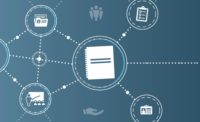Managing Risk, Business Continuity and Resiliency during a Pandemic
Physical security leaders are being propelled into new roles during the pandemic.


Bill Schieder is a former FBI agent and current head of global physical security at shipping logistics startup, Flexport.
Photo courtesy of Bill Schieder

Brian Phillips is director of global security strategy at Traction Guest.
Photo courtesy of Brian Phillips



Physical security leaders – increasingly mandated to keep facilities safe and operational during the pandemic – are being propelled into a unique position to become revenue preservers for their business. They are seen as first-order strategic, earning their “seat at the table” as revenue preservers alongside cybersecurity leaders – particularly as the gap between physical and cyber narrows.
Bill Schieder is a former FBI agent and current head of global physical security at shipping logistics startup, Flexport. Schieder worked in counterintelligence at the FBI before becoming a physical security, risk management and business continuity specialist.
Brian Phillips is director of global security strategy at Traction Guest, which provides enterprise visitor management. He has an extensive background at the intersection of technology and physical security, having built the physical security program at Alexion Pharma and then serving as director of global security at Thermo Fisher Scientific.
Schieder has been working in corporate security since 2006, and has built physical security programs from the ground up. “I’ve really enjoyed how technology has changed how we go about our day-to-day jobs. That really keeps me excited about the profession on a day-to-day basis because there really are so many different opportunities. There are multiple technologies available. It used to be you were tied into a specific resource or a specific tool. Now, thanks to competition, everybody is working within an open API environment. It allows you to build more of a bespoke security organization because you can pick and choose the best solution and resources for your company.”
Revenue Preservation and Remote Employees
COVID-19 has forced many employees to work remotely, with no end in sight to return to physical offices. It’s a scenario that has been playing out across the country as the number of coronavirus cases swells and more employers commit to the social-distancing practices that health officials say will help slow the spread of COVID-19. Large tech employers such as Apple, Google, Facebook and Microsoft — with significant populations based in Seattle and other cities hit hard by the pandemic — were among the first to ramp up remote work plans for many or all of their employees around the globe.
Many employees may not feel safe returning to a physical office, says a recent Traction Guest survey. The survey found that 84 percent of employees are somewhat or very concerned about going to their organization’s office, warehouse or physical worksite for the remainder of 2020. An additional number (85 percent) of respondents said their physical health and safety in the workplace is a greater consideration now than before the pandemic.
Despite growing concerns among employees, 15 percent reportedly do not know if their company has introduced new technology to help ensure employee health and safety. Another 39 percent of employees noted that their company has not introduced any new health and safety technology, leaving a large number of employees at risk.
To address employee concern about the return to work, many organizations have proactively begun adopting new technology solutions to keep their staff safe. In fact, 45 percent of employees noted their company has already adopted new technology for employee health and safety. Among the technologies that employees believe would make them feel more comfortable returning to a physical workplace, respondents cited touchless sign-in technology (54 percent), which entails not having to touch a sign-in device, kiosk or security access control system upon entering the facility.
Phillips says, “The new standard of population and facilities risk management requires us to think about everyone entering a facility as one universal risk management challenge. From how any individual enters a building to how they interact with others on premises, physical security professionals will be tasked with ensuring a safe and secure visit for all.”
At Flexport, Schieder is working to build a secure supply chain program and a physical security and crisis management focused organization, and he is using his visitor management solution to help accomplish that goal. Schieder and Phillips have been colleagues for several years, so when Flexport employees began to work from home offices, but wanted to increasingly return to work, Schieder turned to Phillips and the Traction Guest solution, one which was already in place for visitor management.
“I think that now is the time to shine for security executives,” Phillips says. “They can show their value proposition by incorporating technologies that not only secure the business but also mitigate new risks caused by COVID-19.”
“Every one of our Flexport locations around the world are under localized restrictions when they are allowed to come back to the office,” Schieder explains. “We were already using Traction Guest for visitor management; we just asked them to take a step further. If we decided, for example, we’re going to allow 150 people a day to come back to our San Francisco office, how can we use Traction as a tool to have employees register and to track who has been exposed to COVID and who will be in the office?”
Using the system, an employee signs up to go to the office and receives an email, with questions regarding their exposure to the virus, in addition to health questions. If questions are answered a certain way, the employee is sent another email, requesting they continue to work remotely. Now, Schieder and his team can track more efficiently the number of employees in an office each day.
“We are able to input screening questions for employees to answer regarding their travel,” Schieder explains. “That helps us to instantly eliminate employees who are high-risk from entering the building. In turn, I am able to communicate to our crisis management team an actual dollar figure of stopping the virus in our buildings. We know how much it costs to clean and disinfect our building, but by eliminating a high-risk employee from the building, I can show how much money we saved to not have to take the extra cleaning actions. That has allowed for revenue preservation.”
Overall, he says, “It’s a way for me to plan for what may or may not happen. That is one of the biggest struggles for anyone in charge of business continuity crisis management. What would we do if we had an individual test positive for COVID-19? How would we react? What would we do? We did have contractor at one of our warehouses test positive, but we had a plan in place, so we were able to get in front of it. Unfortunately, a crisis is never convenient for us. We don’t have the luxury to sit back and evaluate our business continuity plans. We have to use lessons learned to be better and stronger.”
The Risk Manager
“I view myself more as a risk manager than as a security professional. I always have,” says Schieder. “My goal, in every role, is always to understand how to make my security organization a viable business partner to the point where business units reach out to me, versus the other way. And that’s when you know that you’ve gotten people’s attention.”
Phillips adds, “There shouldn’t be any instances where you’re just deploying a security system, just because your peers have done it or because it’s in a security manual. You should always be evaluating specific risks and the countermeasures that are needed. When we looked at Bill’s visitor management system and the fact that it was not being used because there were no visitors, we found an opportunity to get more value out of it to mitigate risk, versus convincing him that he needed to purchase another tool. Corporate security can be like an insurance plan in a company, where you need to spend a little on security to save a lot, or risk disaster or criminal events. However, it does not have to be that way. Solutions can be tweaked to create different purposes rather than spending more money. That is how the risk manager and security profession works: you have to be able to decipher which tools are the best for your company to avert risk at all levels. That’s where you will find success.”
Looking for a reprint of this article?
From high-res PDFs to custom plaques, order your copy today!









